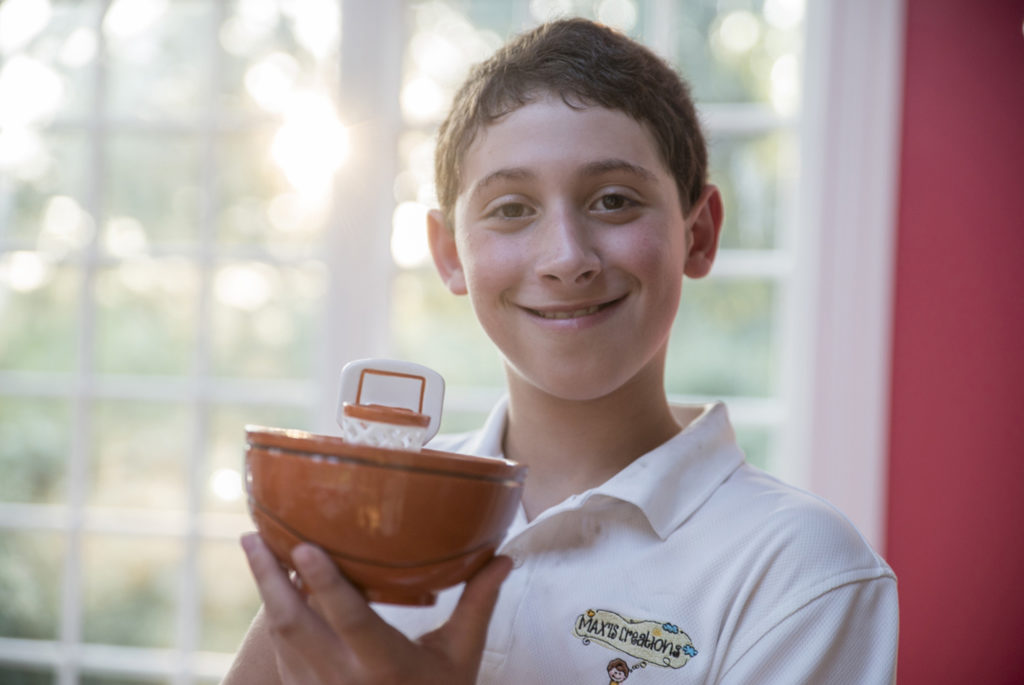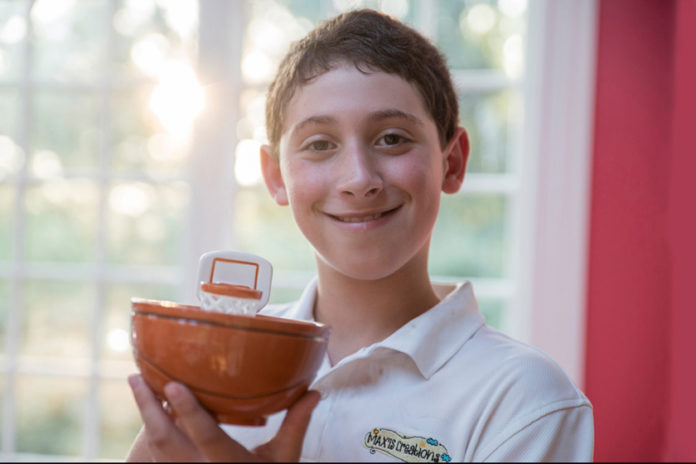
This article was first published in Creative Child
Jennifer Ash was stunned walking into her son’s art class one afternoon. Max Ash, then 8, had been telling his mom for weeks about a ceramic mug he made with a basketball hoop attached to it. It was a Hanukkah gift he had in mind for his brother Sam Ash so he could throw marshmallows through a hoop while drinking hot chocolate. Much to his annoyance, though, friends were copying his idea. But for Jennifer Ash, seeing the imitation mugs his son spawned became a defining moment: she realized she had been too focused on the limitations of her son’s dyslexia.
“Instead of seeing his learning disability as a disadvantage, I realized it also could be looked at as an advantage,” said Jennifer Ash.
Dyslexia is a learning disability characterized by difficulty in reading. But people with dyslexia have been known to see things differently. They see patterns and codes the way those without dyslexia do not. Many of the top codebreakers and over 50% of NASA workers are dyslexics. And some of the world’s greatest thinkers like Albert Einstein had dyslexia. Research seems to indicate that with language-based learning difficulties come other cognitive strengths. The mug, at least in eyes of Jennifer Ash, was just one of the many ways Max saw the world differently. But this time, it caught the attention of his classmates and his parents did more than pat their son on the back.
“If people are copying [your mug], that means it’s a really good idea,” Jennifer Ash told her son. “So when you grow up, people won’t only pay you for your art, but they’ll pay you for your ideas.”
“What do you mean?” asked Max.
“Well, you could actually make these yourself or if you have an idea, someone else can make them and you can sell more of them and make money,” she explained, appealing to an entrepreneurial itch she had been noticing in her son.
“I want to do that,” he answered.
At the time of interview, The Mug With a HoopTM was selling at an astounding rate of one mug per minute. It recently made an appearance on the Today Show and even with no mention of a child behind the invention, managed to deplete their Amazon inventory. To date, more than 44,000 mugs have been sold.
Being involved in a full-fledged business has been a natural fit for 11 year-old Max Ash, who prior to founding his company, MAX’IS Creations, was a veteran of lemonade stands and yard work. The logistics of mass commerce may have been introduced to Max Ash by his parents, but he displayed entrepreneurial interests early on, a trait Jennifer ash says is completely independent of his older brother or anyone else in the family. And it is this natural curiosity about making money that continues to fuel the 10-year-old kidpreneur to invest a few hours a week into his business, even if that means doing things he doesn’t always enjoy like inputting data into Google Docs. Max Ash is able to see the bigger picture.
“I love basketball shoes,” he’s admitted.
The more unnatural fit came for Max Ash’s parents, Jennifer Ash and Ronald Ash, who had no prior background in business. She is a corporate psychologist and Ronald Ash is a hospital administrator.
“Sometimes you got to follow your kids,” Jennifer Ash admitted.
They didn’t go in blindly though and were careful about their approach to business. After being named one of the finalists for an invention contest sponsored by The Grommet and Boston.com (a contest that wasn’t for kids), Max Ash, with the help of his parents, also ran a successful crowdfunding campaign on Indiegogo and raised over $6000. One of the first third-party retailers Max Ash partnered with accrued over 2,900 Facebook likes, the most in the company’s history. And once The Mug With a HoopTM launched with another retailer to great acclaim, they realized the product would sell and dove in.
[Related: 3 Steps to Manufacture a Product Overseas]
For Jennifer and Ronald Ash, however, the real impetus for starting a business on top of their already demanding careers were the pain points their son encountered as a young child. There were times, like when Max Ash was unable to participate in his first kindergarten show and tell, which often left Jennifer Ash wondering, “Would he go to a good college? Would he have a good career? Would this learning disability negatively impact his life?”
The Mug With a HoopTM turned out to be a beautiful example of how Max Ash’s dyslexia could give him an edge, according to his parents. And perhaps more motivating than turning a profit, the mug continues to be their way of showing the world what children with learning disabilities can accomplish. They have partnered with Understood.org, an offshoot of the National Center for Learning Disabilities, which the mug features on its packaging. And Max Ash donates 5 percent of his profits to charities that support learning disabilities.
MAX’IS Creations, Inc. is now a family-run business, which keeps the family on their toes. Max is Chief Creator, his brother Sam Ash is Chief Product Tester, and his parents do much of the back-end work. But the business has also provided amazing learning opportunities for Max. The former child who had trouble at his first show tell, was a keynote speaker at a Youth CITIES entrepreneurship event and even received a standing ovation. The mug is now sold at retailers like Nordstrom, Uncommongoods, The Grommet and even the Basketball Hall of Fame gift shop. And Max Ash has since added other sport mugs including The Mug With a GloveTM, The Mug With a GoalpostTM, The Soccer Mug With a GoalTM and The Hockey Mug With a NetTM.
Whether Max Ash was able to conjure up his inventions because of his dyslexia or despite of it is a matter of perspective. He has a gift as many children with learning disabilities do. But the gift for Max Ash is really twofold. Because when it comes to children who have challenges (and all kids have challenges to a certain extent), how the child turns out largely depends on how those challenges are perceived by the parent, whether it’s a burden or a gift. In this case, his parents chose to perceive his dyslexia as a gift.
When I asked Max how he perceived his dyslexia, he referred me to the banner on his school building: “Children with dyslexia see the world differently. Isn’t the world lucky they do?”




